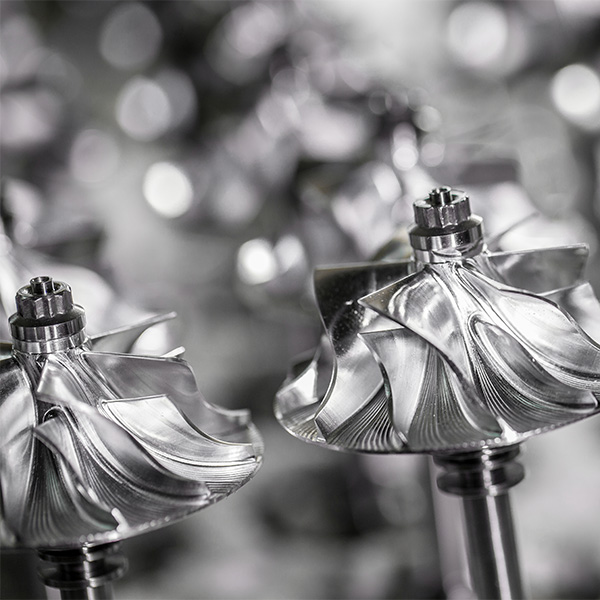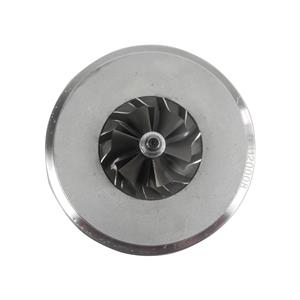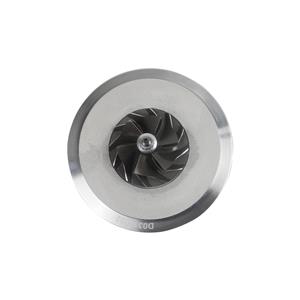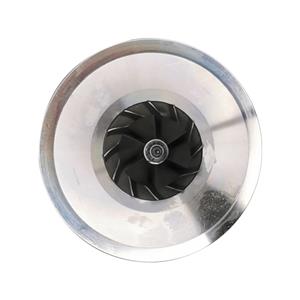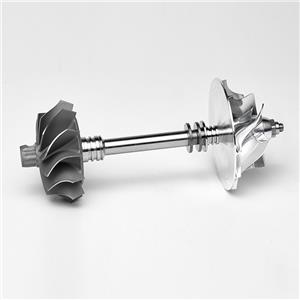Turbocharger Rotor Failure Detection
Turbocharger Rotor Failure Detection
How to detect turbocharger failure? Let the turbocharger rotor manufacturer tell you.
1. Failure of turbocharger parts.
Failure of turbocharger components can reduce turbocharger efficiency, increase displacement and reduce power. For example, wear and burn failures of rolling bearings can cause friction that reduces the speed of motor rotor components. In addition, the damage of the rolling bearing will also cause the leaves of the rotor part of the turbocharger motor to rub against the casing, resulting in a reduction in the speed ratio of the rotor part of the motor.
Failure of the intake valve of the turbocharger exhaust pipe or incorrect calibration of the gate valve will cause the working pressure to be too high or too low. In particular, increasing the working pressure too low will cause too much fume extraction and a reduction in output. The working pressure of the supercharger is too high, causing the automobile oil to leak and even destroying the diesel engine.
2. Fuel consumption and leakage failure
The main channel working pressure oil of the diesel engine is used to lubricate the rolling bearings and cool the turbocharger. Under the pressure of the diesel engine, the car oil is supplied to the rolling bearing of the turbocharger through the oil supply pipe for lubrication and cooling, and then flows to the engine oil pan according to the return pipe at the bottom of the turbocharger. Each end of the turbocharger motor rotor assembly has a hermetic skeleton seal to prevent organic exhaust gas and air from compressing into the turbocharger housing.
If crankcase ventilation working pressure oil is not pumping oil from the turbocharger, it will lift the load on the rolling bearings of the motor rotor components and allow the vehicle oil to leak from the refrigeration compressor hydraulic seals into the diesel engine. Exhaust pipe friction resistance should be checked during maintenance to ensure that vehicle oil leaks from the turbine engine hydraulic seals on diesel engines containing catalytic converters into the exhaust system.
A blocked or damaged return line can increase the working pressure in the turbocharger housing and cause vehicle oil to escape from the seal ring. When this type of leakage occurs, the empty intercooler should be cleaned and the car oil in the intake system should be cleaned.
3. The working pressure of the turbocharger is reduced and the engine displacement is not enough
The reduction of the working pressure and the working pressure ratio of the turbocharger indicates that less air is pumped into the cylinder, which in turn results in a reduction in the output power of the diesel engine, as well as an increase in fuel consumption and an increase in exhaust pipe temperature.
The increase of the working pressure of the turbocharger decreases, and the reason for the decrease of the increase ratio is as follows:
(1) The filter element of the air filter element is dirty and dusty, which will cause blockage, increase the frictional resistance of the air inlet and reduce the increase in working pressure.
(2) The oil stains adhere to the inner air pipe of the refrigeration compressor and the inner air pipe of the intermediate cooling tower, which increases the cyclone frictional resistance, reduces the working pressure of the refrigeration compressor and reduces the efficiency.
(3) The shaft sealing ring of the refrigeration compressor is damaged, steam leakage and loss.
(4) Due to the poor ignition of the diesel engine, serious carbon deposition, and damage to the rolling bearing of the turbocharged motor rotor parts, the rotational frictional resistance of the turbocharged turbocharger increases, and the turbocharger speed ratio decreases, resulting in a decrease in the working pressure.
(5) The muffler of the exhaust pipe is blocked and the exhaust pipe is not smooth, which makes the turbocharged exhaust pipe condensate too high and causes the increase of the working pressure to decrease.
(6) Diesel engine cylinder liner, piston rod, engine piston, air valve and seat ring and other parts are seriously worn, and the leakage of air compression to the cylinder is increased, which reduces the increase of working pressure and the efficiency of refrigeration compressors.
According to the reasons for the failure obtained from the above analysis, the blocked filter element should be removed or replaced. Eliminate oil stains in the air pipe to make the cyclone smooth; remove and replace the sealing ring; remove the carbon deposits adhering to the rotor shaft of the motor and remove and replace the wave rolling bearing; transmit the exhaust pipe to make it smooth; moderately remove and replace the matching pair, such as the cylinder Sleeves, piston rods, engine pistons and air valves; adhering oil should be completely cleaned to reduce gas flow frictional resistance and increase working pressure.
